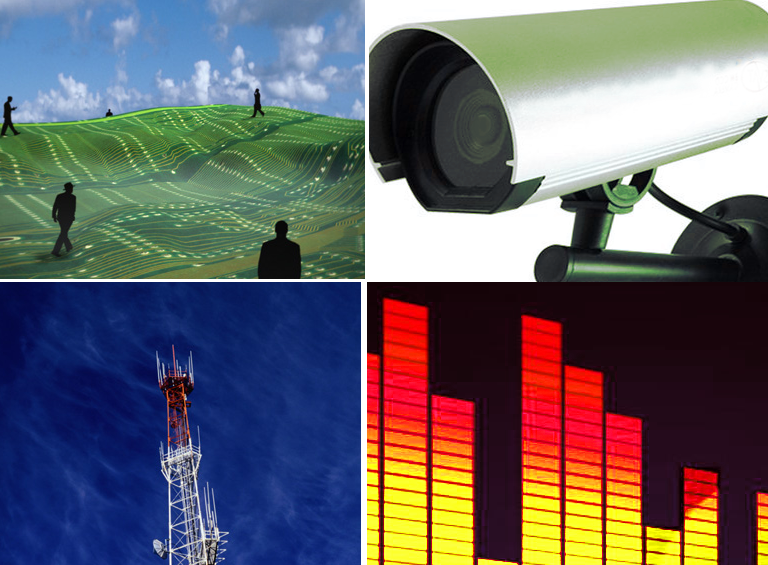UTM publishes eight papers in international journals
INESC TEC’s Telecommunications and Multimedia Unit (UTM) has recently published eight articles in international journals in the areas of security and multimedia.
28th September 2012
The most recent articles published by UTM researchers are:
- "Reliable P2P Content Delivery for Alternative Business Models", written by Hélder Castro (UTM), Artur Pimenta Alves (former director of INESC Porto) and Maria Teresa Andrade (UTM), was published in the International Journal of Computer Information Systems and Industrial Management Applications. This paper defines a hybrid P2P architecture which is more advanced comparatively to the currently used P2P solutions. This can be applied in the information security area and global operations management. This architecture supports the operation of entities engaged in commercial distribution of content online, which run on “open” business models with lateral gains.
- "Sprite-based generation of side information for multi-view Distributed Video Coding", authored by Lucian Ciobanu and Luís Côrte-Real (UTM), was published in Multimedia Tools and Applications. The paper presents an innovative video encoding solution for video surveillance environments with multiple cameras. The cameras move freely to allow a flexible monitoring of the environment from a variety of perspectives. This paper proposes an alternative to the conventional video coding by exploiting the correlation between multiple video sources (e.g., overlapped views in real time or past visual memories of each camera). The goal is to reduce video stream flows in the network and, at the same time, increase the autonomy of mobile cameras.
- "Run-time generation of partial FPGA configurations for subword operations", by João Canas Ferreira (UTM) and Miguel Silva, was published in Microprocessors and Microsystems. For the authors, instructions for concurrent processing of data units smaller than whole CPU words are useful in areas such as multimedia processing and cryptography. Since the processors used in FPGA-based embedded systems lack support for such applications, this paper proposes mapping sequences of subword operations to a set of hardware components and generating the corresponding FPGA partial configurations at run-time. In order to ensure short execution times, only a straight left-to-right arrangement of components is supported, where only communication with adjacent components is allowed. The run-time generated hardware versions achieve speed-ups between 11 and 73 over the software versions.
- "Overcoming Motor-Rate Limitations in Online Synchronized Dancing Robot", written by Fabien Gouyon and João Oliveira (UTM), Armando Sousa and Catarina Santiago (INESC TEC’s Robotics and Intelligent Systems Unit - ROBIS) and Luís Paulo Reis (Laboratory of Artificial Intelligence and Computer Science - LIAAC), was published in the International Journal of Computational Intelligence Systems. This paper proposes an online sensorimotor architecture for controlling a low-cost humanoid robot to perform dance movements synchronised with musical stimuli. Furthermore, the paper proposes quantitative metrics for measuring the level of beat-synchrony of the generated robot dancing motion.
- "Beat tracking for multiple applications: A multi-agent system architecture with state recovery", by João Oliveira, Fabien Gouyon, Matthew Davies (UTM) and Luís Paulo Reis (LIAAC), was published in the IEEE Transactions on Audio, Speech and Language Processing. In this paper, the authors propose a system for detecting beats, the IBT, which can be used for multiple purposes. Using a database of audio clips, the authors were able to demonstrate that the system performs efficiently and at a level comparable to state-of-the-art algorithms. The IBT is multi-platform, open-source and freely available, which includes plugins for different popular audio analysis, synthesis and visualisation platforms.
- "A parameterizable spatiotemporal representation of popular dance styles for dancing humanoid characters", by João Oliveira and Fabien Gouyon (UTM), Luiz Naveda and Marc Leman (Institute for Psychoacoustics and Electronic Music - IPEM, Belgium), Luís Paulo Reis (LIAAC) and Paulo Sousa (Faculty of Engineering of the University of Porto - FEUP), was published in the Journal on Audio, Speech, and Language Processing. In this article, a model is formalised for the analysis and representation of popular dance styles of repetitive gestures by specifying the parameters and validation procedures required to describe the spatiotemporal elements of the dance movement in relation to its music temporal structure (musical meter). It results in a compact and discrete mid-level representation of the dance that can be further applied to algorithms to generate movements in different humanoid dancing characters.
- "Selective sampling for beat tracking evaluation", written by Andre Holzapfel (former researcher at UTM), Matthew Davies, João Oliveira and Fabien Gouyon (UTM) and José Zapata (Universitat Pompeu Fabra, Barcelona), was published in the IEEE Transactions on Audio, Speech and Language Processing. This paper proposes a method that can identify challenging music samples for beat tracking without ground truth. The method, motivated by the machine learning method of “selective sampling”, is based on the measurement of mutual agreement between beat sequences.
- "Music genre classification using LBP textural features", authored by Fabien Gouyon and Yandre Costa (UTM) Luís Oliveira, Alessandro Koerich and Jefferson Martins (Federal University of Paraná, Brazil), was published in Signal Processing. This paper presents an approach to music genre classification which converts an audio signal into spectrograms and extracts texture features from these time-frequency images. These are then used for modelling music genres into a classification system.
UTM/INESC TEC, September 2012


